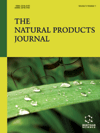
Full text loading...
We use cookies to track usage and preferences.I Understand
Cells generate reactive oxygen species (ROS), which cause oxidative stress. Such stress is counteracted by a complex antioxidant system, which includes molecules of the secondary metabolism of plants, mainly phenols. Several studies attribute the antioxidant activity of a species to these compounds, although, in other studies, this relationship is not clear.
The aim of this study was to determine whether the amount of total phenols is a good indicator of the antioxidant activity of a species.
The present study quantified the total phenols and antioxidant activity measured by DPPH and ABTS methods of 18 species of Mediterranean scrubs and established the correlation between these two parameters.
The obtained results showed that there was a wide variability in the content of phenols among the analyzed species, with Cistus salviifolius and Nerium oleander presenting the largest and smallest amount of total phenols, respectively (0.043 and 0.004 gallic acid equivalent (mg/mg dw)). A cluster analysis differentiated these species into two groups with significantly different amounts of phenols. The species that constitute Group I presented an average amount of 0.029 gallic acid equivalent (mg/mg dw), and that of the species of Group II was 0.011±0.003 gallic acid equivalent (mg/mg dw). The relationship between the antioxidant activity quantified in each species and its content of total phenols showed a positive and significant correlation; however, when considering the two groups of species, the significant correlation between these parameters depends on the species group, the extract concentration used, and the method employed to quantify the antioxidant activity.
These results indicate that it would not be correct to generalize that there is a significant correlation between the amount of total phenols and the antioxidant activity. Therefore, total phenol content cannot be used as a single indicator of the antioxidant activity of a species.

Article metrics loading...

Full text loading...
References


Data & Media loading...

